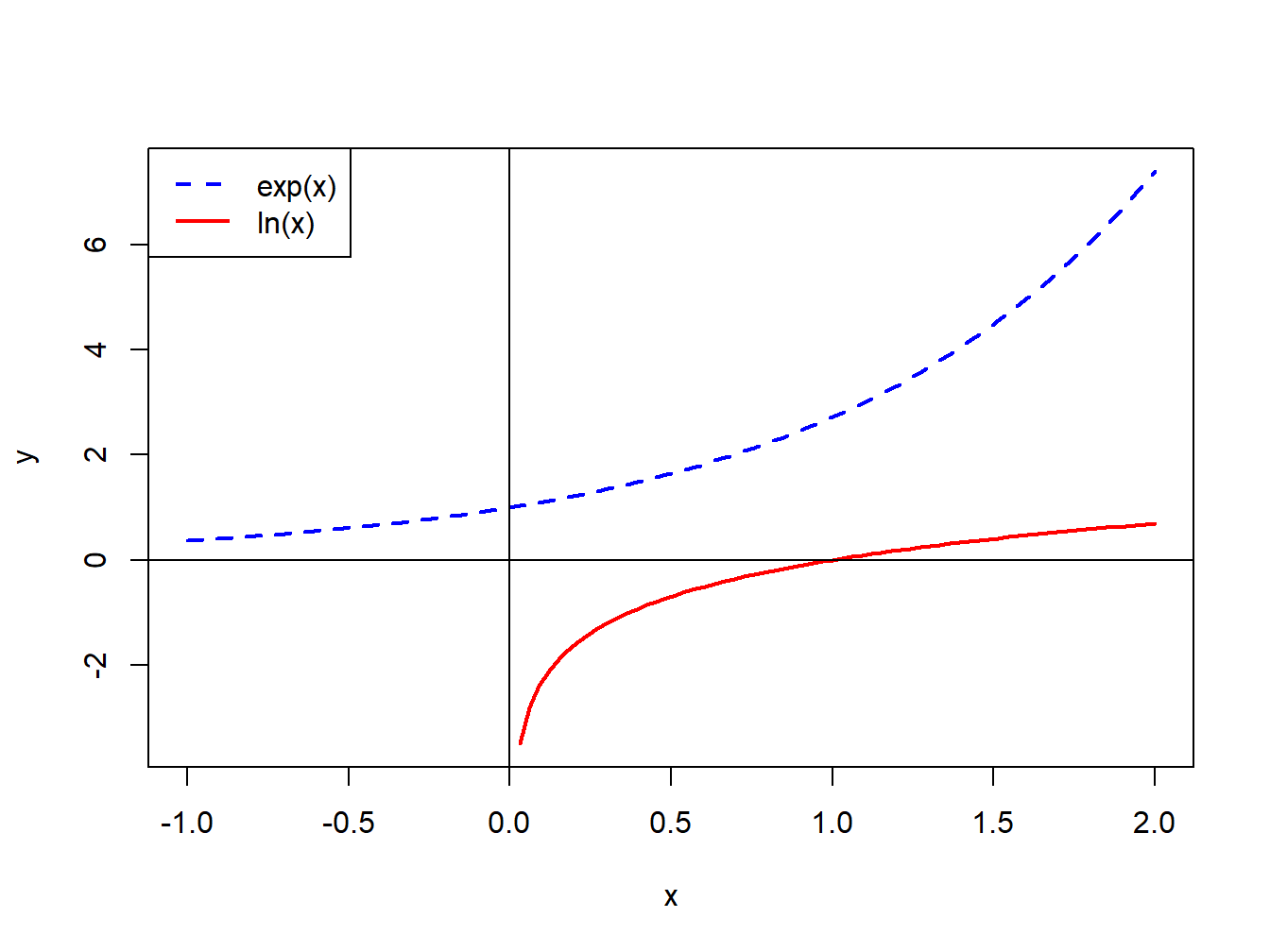1.6 Appendix: Properties of Exponentials and Logarithms
The computation of continuously compounded returns requires the use of natural logarithms. The natural logarithm function, \(\ln(\cdot),\) is the inverse of the exponential function, \(e^{(\cdot)}=\exp(\cdot),\) where \(e^{1}=2.718.\) That is, \(\ln(x)\) is defined such that \(x=\ln(e^{x}).\) Figure 1.6 plots \(e^{x}\) and \(\ln(x)\). Notice that \(e^{x}\) is always positive and increasing in \(x\). \(\ln(x)\) is monotonically increasing in \(x\) and is only defined for \(x>0.\) Also note that \(\ln(1)=0\) and \(\ln(0)=-\infty.\)

Figure 1.6: Exponential and natural logarithm functions.
The exponential and natural logarithm functions have the following properties:
- \(\ln(x\cdot y)=\ln(x)+\ln(y),\) \(x,y>0\)
- \(\ln(x/y)=\ln(x)-\ln(y),\) \(x,y>0\)
- \(\ln(x^{y})=y\ln(x),\) \(x>0\)
- \(\frac{d\ln(x)}{dx}=\frac{1}{x},\) \(x>0\)
- \(\frac{d}{dx}\ln(f(x))=\frac{1}{f(x)}\frac{d}{dx}f(x)\) (chain-rule)
- \(e^{x}e^{y}=e^{x+y}\)
- \(e^{x}e^{-y}=e^{x-y}\)
- \((e^{x})^{y}=e^{xy}\)
- \(e^{\ln(x)}=x\)
- \(\frac{d}{dx}e^{x}=e^{x}\)
- \(\frac{d}{dx}e^{f(x)}=e^{f(x)}\frac{d}{dx}f(x)\) (chain-rule)